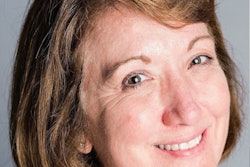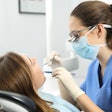
Remember tug of war? Your team pulling as hard as possible to make the dangling middle string cross the line before the other team, working on outmaneuvering you, builds a winning strategy for your team's demise? Medical billing for dentistry can feel like that. The cause of your patients' oral difficulties often stems from their medical condition and/or medication use. Maybe there was an injury where the oral cavity sustained trauma or an intervention is required prior to surgery or chemotherapy treatment?
When you bill medical insurance, here are some tips to reduce the "pull" to get your claims paid faster.
1. Sequence your diagnosis codes correctly
Tell your story backward. For instance, say you see a patient who needs extractions, bone grafting, membrane, and implants due to sustaining trauma in the anterior region. The first code will be the worst condition you will be treating them for, i.e., partial loss of teeth due to trauma class I. Now we work on the why.
2. Have each service line make sense
Let's say that this patient fainted while using the toilet and his mouth struck the tub as he went down. We will code the fall off the toilet with striking object due to syncope (fainting) in a single-family dwelling. Here is how it would look:
- This is the story: John Doe was in his single-family house, fainted while using the toilet, and struck his maxillary and mandible arches on the bathtub, causing a partial loss of teeth due to trauma class I.
- This is how the codes would be listed:
- K08.411: Partial loss of teeth due to trauma class I
- S05.XXA: Fracture of tooth
- W18.12XA: Fall from or off toilet with subsequent striking against object, initial encounter
- R55: Syncope
Does explaining your story both ways make sense? Medical billing for dentistry is all about making sense for each service line using up to four diagnosis codes.
3. Chart-note verbiage
 Laurie Owens, CPC, CPB.
Laurie Owens, CPC, CPB.Regardless of whether you are submitting to dental or medical, make sure that your diagnosis codes match your SOAP notes (subjective, objective, assessment, plan). This documentation will support the diagnosis codes and is an area that needs continual reinforcement.
When our doctors were in dental school, they wrote volumes of chart notes. Now that they are in private practice, we are seeing text messages -- and some of them are very cryptic and illegible.
Documentation should be something in between the two, remembering that the more you use the word "teeth," the more medical will say that your practice is focusing on the dental issue. Bring to light the stabilization of the bone or reconstruction of the maxillary or mandibular arches along with the comorbidity of the assessment.
4. Be clear, concise, and not repetitive
There is nothing more frustrating to medical insurance staff than when we wear our dental hat and send everything (claim, periocharting, pano, bitewings, narrative, chart note, etc.). You should be able to explain without any of that. If medical wants any additional documentation, they will ask for it. If your procedure code description states "bone graft mandible," you do not need a modifier telling them it was in the mandible.
5. Be honest
Do not commit fraud just to get your claim paid. Insurance fraud is not a laughing matter and is punishable by jail, fines, and even a loss of license for your doctor. No claim is worth that risk!
Here are some of the key items that are considered fraud:
- Billing for services not performed
- Upcoding
- Waiving copayments and deductibles
- Not disclosing payment from other insurance
- Unbundling or improper use of codes
Now, these tips will help get your claims paid faster, but if you are not billing medical, I encourage you to attend a course as soon as possible. Picture this: If it is you alone against the insurance company in tug-of-war match, who would win? Getting the education to know the rules will give you the "big guns" on your side of the rope!
Laurie Owens is a certified professional coder (CPC) and certified professional biller (CPB) and the director of medical billing education for Devdent. She brings 18 years of experience in educating dental practices on billing medical insurance for dentistry and the techniques to get claims paid.
The comments and observations expressed herein do not necessarily reflect the opinions of DrBicuspid.com, nor should they be construed as an endorsement or admonishment of any particular idea, vendor, or organization.



















